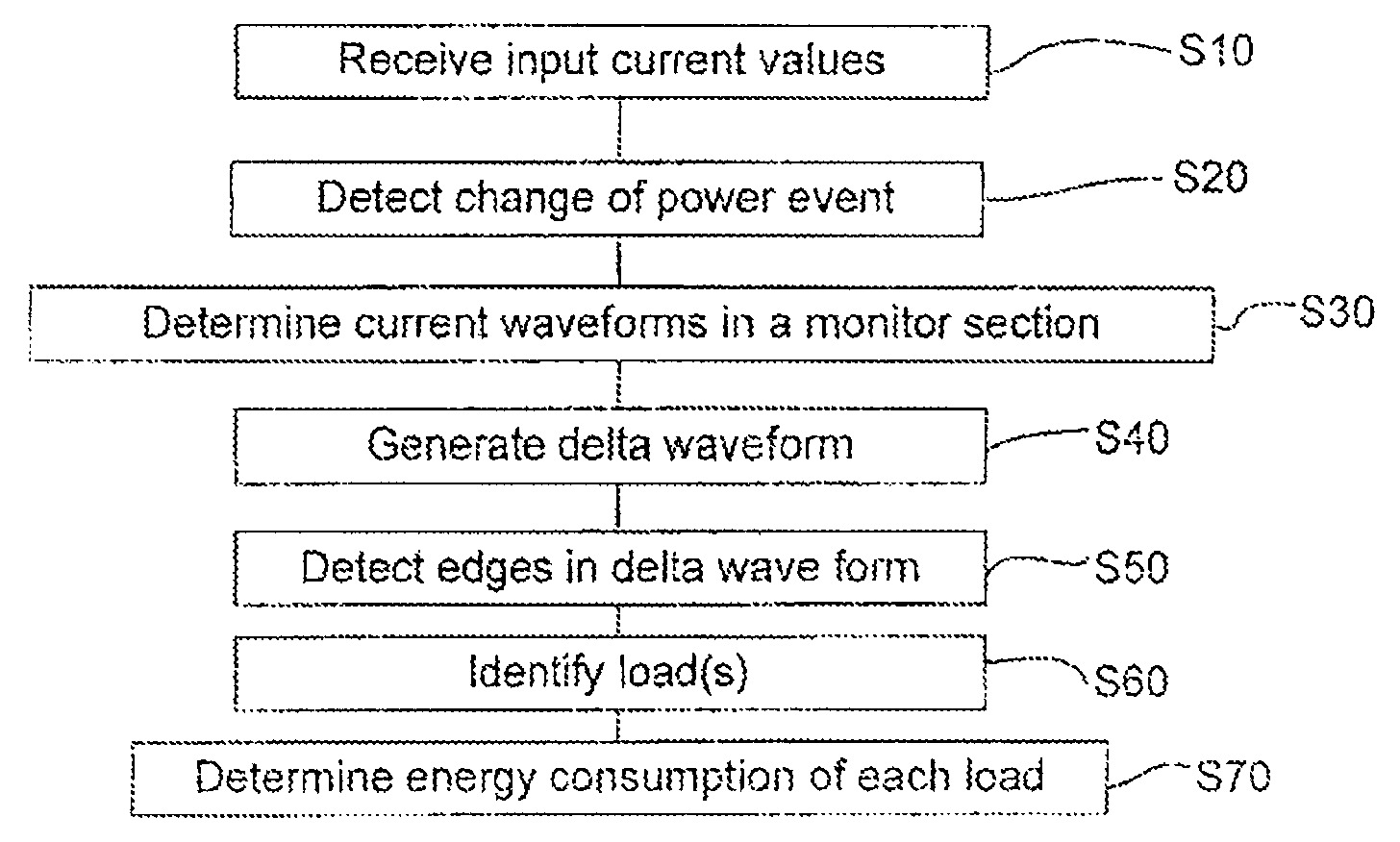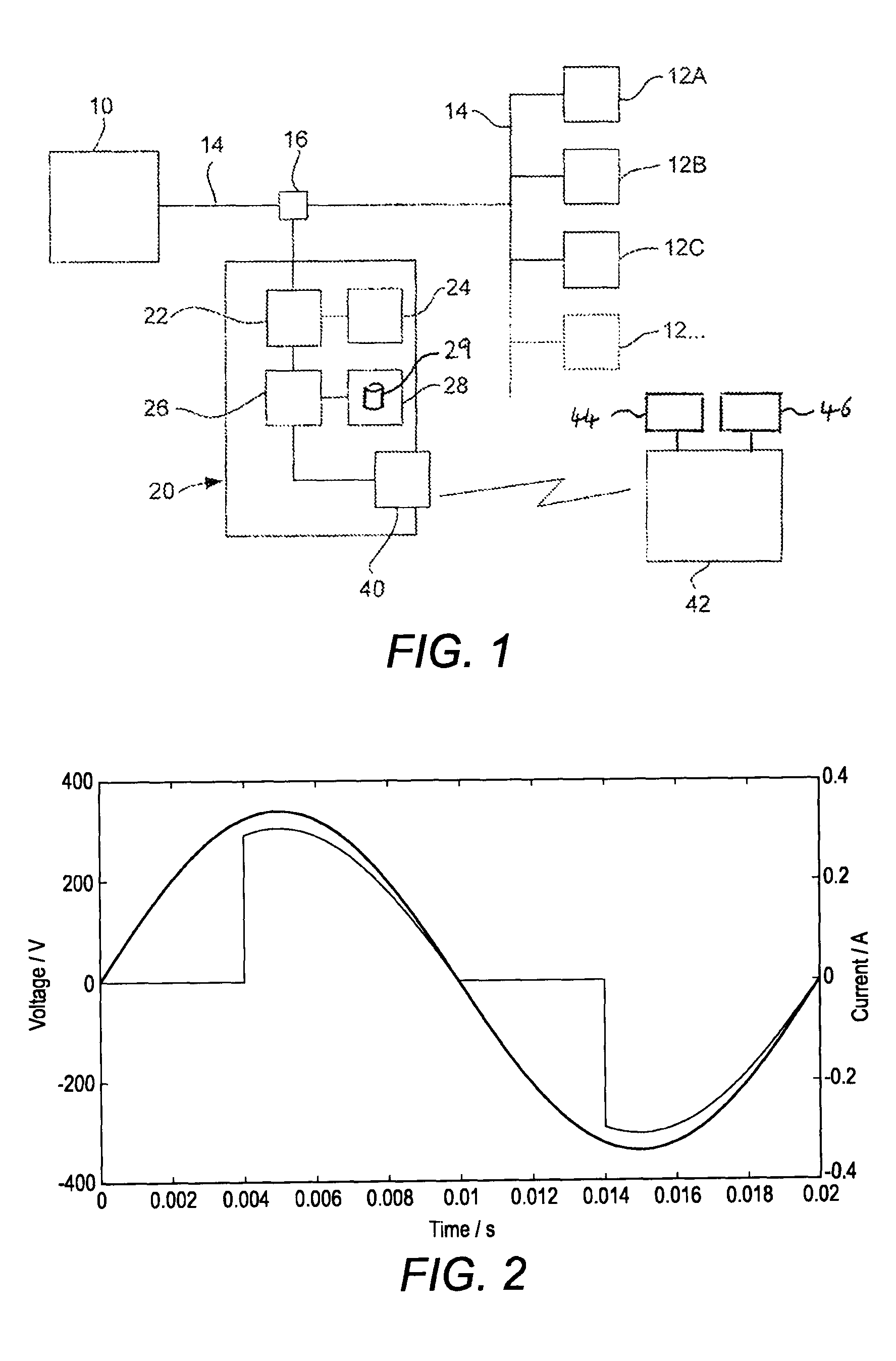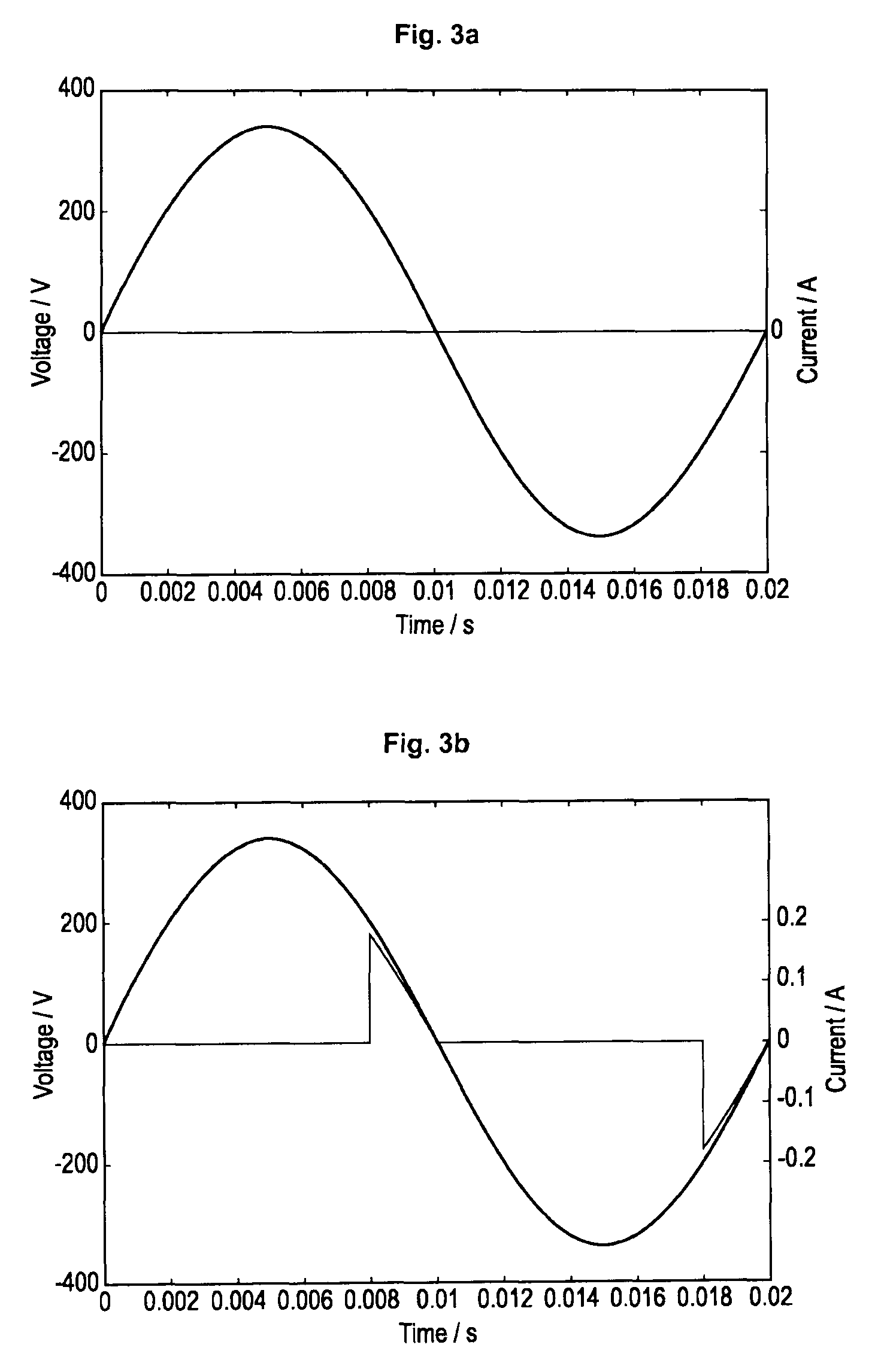Utility metering
a technology for utility meters and meters, applied in the field of utility meters, can solve the problems of inability to connect such meters to permanently-wired appliances, inconvenient information to obtain, and very little idea of how they are actually using energy and where they can cut back, etc., and achieve the effect of less computational intensive and more accura
- Summary
- Abstract
- Description
- Claims
- Application Information
AI Technical Summary
Benefits of technology
Problems solved by technology
Method used
Image
Examples
Embodiment Construction
[0042]An apparatus according to a first embodiment of the invention will now be described. FIG. 1 shows the hardware components of a system incorporating the apparatus for metering the use of electricity, or more correctly for metering electrical energy. The apparatus will be referred to simply as the meter.
[0043]In FIG. 1, the electricity supply to the site, for example a house, apartment, office, shop, school and so forth is denoted 10. The electricity is supplied to a plurality of appliances 12A, 12B, 12C, 12 . . . by means of conventional wiring 14. The appliances and wiring are simply shown schematically in FIG. 1, but may, of course, be configured in any appropriate way, such as via a consumer unit with circuit breakers or fuses, and with one or more ring main circuits with branches or spurs. A sensor 16 is provided to measure the total instantaneous current being provided to all of the appliances 12 from the supply 10, and also to measure the instantaneous voltage of the elec...
PUM
 Login to View More
Login to View More Abstract
Description
Claims
Application Information
 Login to View More
Login to View More - R&D
- Intellectual Property
- Life Sciences
- Materials
- Tech Scout
- Unparalleled Data Quality
- Higher Quality Content
- 60% Fewer Hallucinations
Browse by: Latest US Patents, China's latest patents, Technical Efficacy Thesaurus, Application Domain, Technology Topic, Popular Technical Reports.
© 2025 PatSnap. All rights reserved.Legal|Privacy policy|Modern Slavery Act Transparency Statement|Sitemap|About US| Contact US: help@patsnap.com



